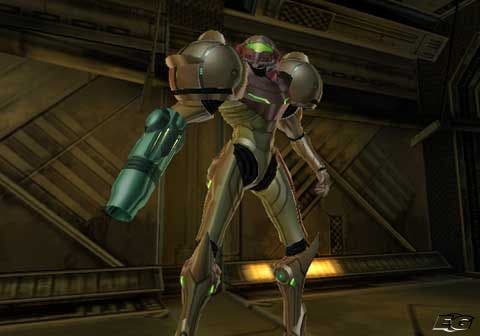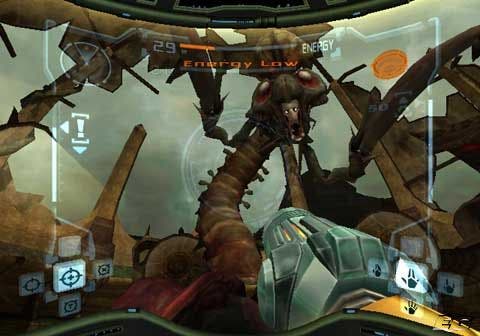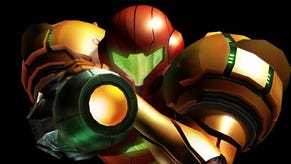Metroid Prime
Preview - Samus is back, and she's looking different

Not The Samus
Metroid Prime is not simply a modern day reworking of the formula; it's the same formula applied to a 3D world, and the first step to translating the game was to come up with a believable alternative to the 2D side-scrolling measures of the past. Choosing the first person perspective was brave, but using a visor's eye view and third person sections to roll around in ball form was like a leap of faith.
Fortunately Retro has done a great job graphically, with all sorts of neat little touches like spinning through the inside of a Metroid for the title screen and flamboyant interface changes on Samus' visor, alongside battered environments at the heart of a scientific disaster, each packed with Alien-style piping, grates, exhaust vents and dingy lighting. The screenshots littering this page stand as testament to Retro's abilities, and the reportedly constant framerate does likewise.
Looking out through the visor was a great idea, because it really does immerse you in the world of Metroid Prime. With all the confined spaces and creepy corridors Samus has to wander down, surely there was no other way to do it. The player can switch between combat and scanning modes for the visor by hitting one of the D-pad directions. Combat lets you look upon your surroundings without any visual adjustments, while scanning highlights objects that can be examined, leaving you vulnerable to attack but also alerting you to consumables and bits of information used to help plunge you deep into Metroid mythos. Other benefits of the visor include offering a nice vehicle for a creative GUI, and a way of showing the player environmental hazards before they fall foul of them.

Keep The Faith
The control system is typically simple, with the left analogue stick moving you forwards and backwards and turning you from side to side, the A and B buttons shooting and jumping, the Y button toggling special weapons, and the C-stick switching between regular items in your arsenal. Hitting X takes the player into the morphing ball form, allowing Samus to clamber through confined spaces and drop bombs with the A button.
Belying this early simplicity though are a number of useful extras. The left shoulder button can be used to lock onto enemies and strafe round them, while the right shoulder gives you access to the pitch control. By default most of the action doesn't require you to look up and down, but with the R button depressed you may, and you can also take advantage of Samus' grappling hook, which uses a third person view to give you the best opportunity to land where you mean to.
Early impressions indicate that the game is designed around the control system, and not vice versa, which is an interesting but sensible approach. Creating a first person shooter clearly wasn't the intention, and instead Metroid is considered an adventure game with action elements, including the early boss fight with the Parasite Queen on display at E3. Sceptics of the control system were apparently humbled by the ease with which the Queen is dispatched, with players easily warming to Samus' new perspective on life and death.
Conclusion
As a huge Metroid fan, I'm delighted to hear that people were pleased with the E3 demo, but I'm prepared to accept that as with so much of what we see at E3, it will probably be a lot less impressive by the time it actually arrives. Nevertheless, if the Miyamoto-directed team at Retro can marry this superb control and camera system to an engaging narrative and keep the design refreshing, Prime could be one of the biggest Cube games of the year, and a respectable return for the mistress of Metroid.
My only other hope is that completing the game quickly rewards you in the same way as it did on the Super Nintendo…







